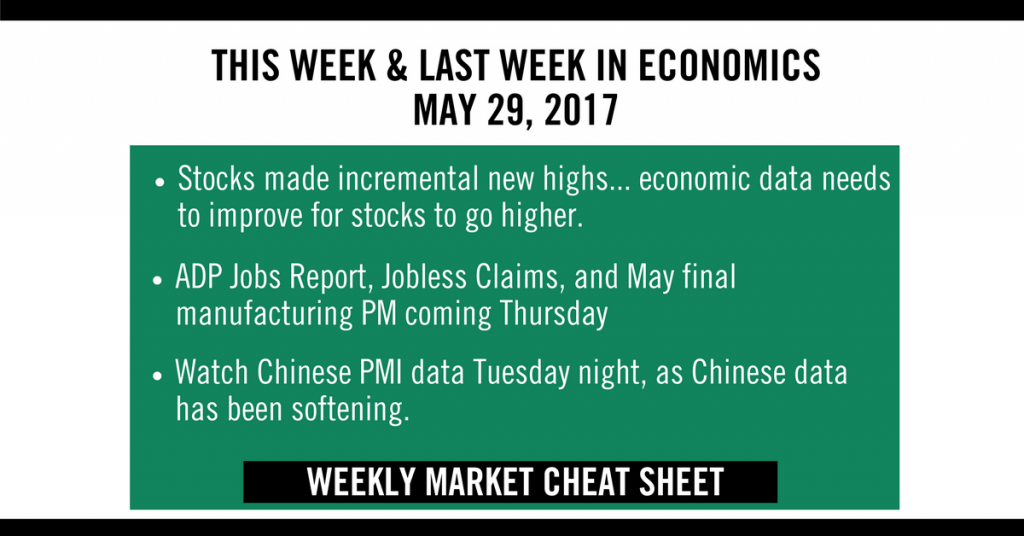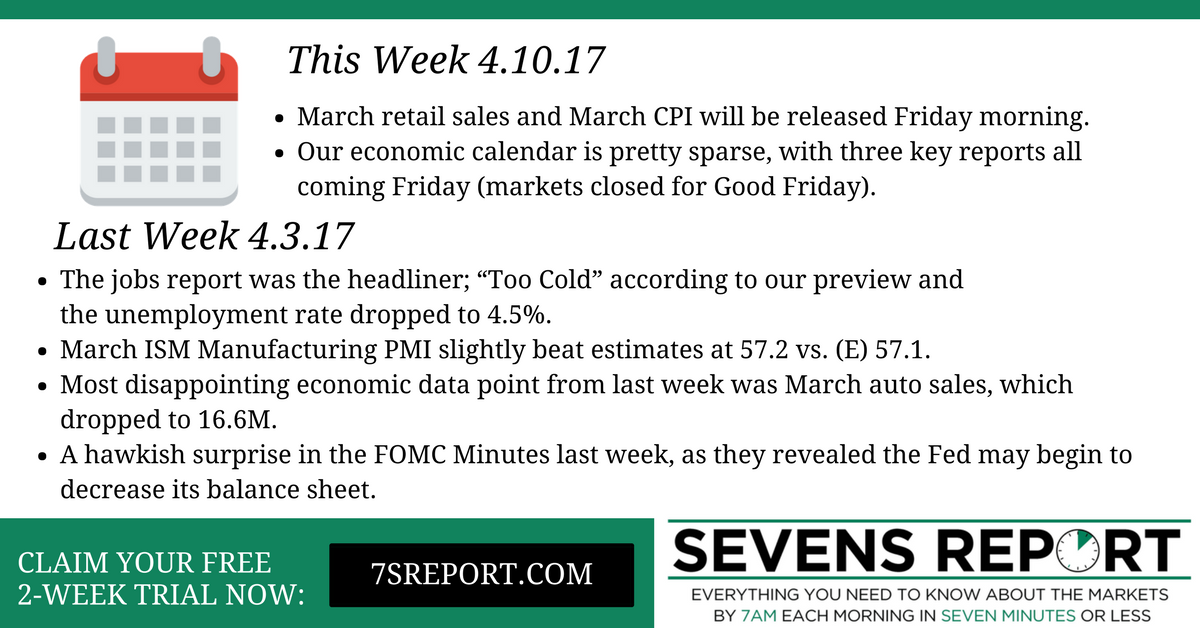Jobs Report Preview, June 1, 2017
For a second-straight month, the risks to tomorrow’s jobs report are balanced. A “Too Hot” number will increase the possibility of more than three rate hikes in 2017 while a “Too Cold” number will fan worries about the pace of economic growth, and the ability of economic growth to push stocks materially higher from current levels.
Join hundreds of advisors from huge brokerage firms like Morgan Stanley, Merrill Lynch, Wells Fargo Advisors, Raymond James and more… see if The Sevens Report is right for you with a free two-week trial.
“Goldilocks” Jobs Report Preview:
“Too Hot” Scenario (Potential for More than 3 Ra te Hikes in 2017)
te Hikes in 2017)
>250k Job Adds, < 4.6% Unemployment, > 2.9% YOY wage increase.
A number this hot will guarantee a June rate hike, but more importantly it would likely reignite the debate over whether the Fed will hike more than three times this year. Likely Market Reaction: Withheld for Sevens Report subscribers—sign up for your free two-week trial to unlock.
“Just Right” Scenario (A June Rate Hike Is Guaranteed, But the Total Number of Expected Hikes for 2017 Remains at Three)
125k–250k Job Adds, > 4.7% Unemployment Rate, 2.5%-2.8% YOY wage increase.
This is the best-case scenario for stocks, as it would imply still-stable job growth, but not materially increase the chances for more than three rate hikes in 2017. Likely Market Reaction: Withheld for Sevens Report subscribers—sign up for your free two-week trial to unlock.
“Too Cold” Scenario (A June Rate Hike Becomes in Doubt)
< 125k Job Adds.
Given the recent unimpressive economic reports, a soft jobs number could cause a decent sell-off in equities. As the Washington policy outlook continues to dim, economic data needs to do more heavy lifting to support stocks. So, given the market’s focus on future growth, the bottom line is bad economic data still isn’t good for stocks. Likely Market Reaction: Withheld for Sevens Report subscribers—sign up for your free two-week trial to unlock.
Bottom Line
This jobs report isn’t important because it will materially alter the Fed’s near term outlook (it’d take a massive miss to do take a June hike off the table). Instead, it’s important because if it prints “Too Cold” it could send bonds and bank stocks through their 2017 lows. And while I respect the fact that stocks have been able to withstand that underperformance so far in 2017, I do not think the broad market can withstand material new lows in yields and bank stocks.
The Sevens Report is the daily market cheat sheet our subscribers use to keep up on markets, seize opportunities, avoid risks and get more assets.



